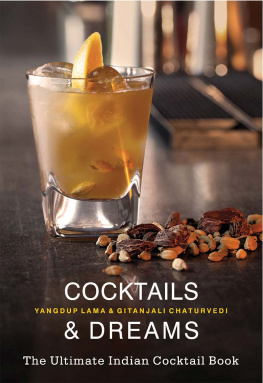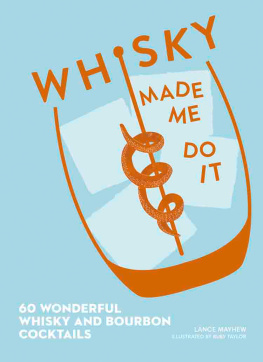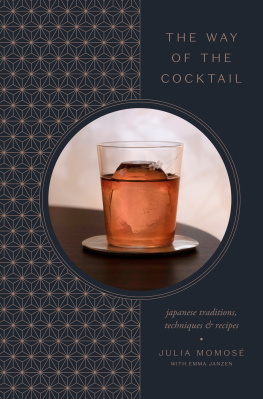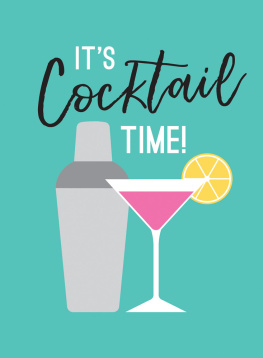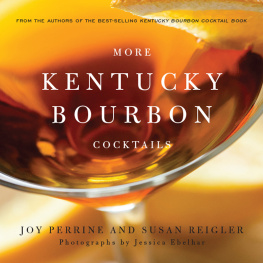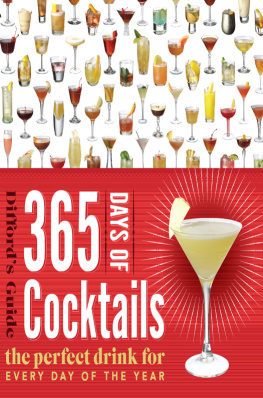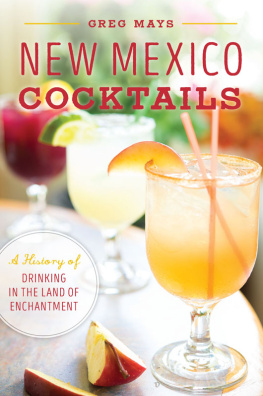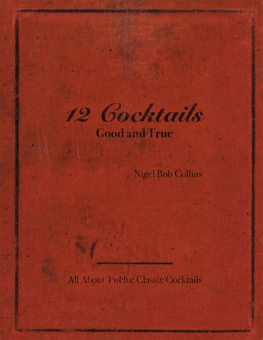COCKTAILS
& DREAMS

Yangdup Lama & Gitanjali Chaturvedi
First published 2014
All rights reserved. No part of this book may be reproduced, stored in retrieval system or transmitted in any form or by any meanselectronic, mechanical, photocopying, recording or otherwisewithout the prior permission of the author and the publisher.
ISBN 978-81-8328-354-0
Published by
Wisdom Tree
4779/23, Ansari Road
Darya Ganj, New Delhi-110002
Ph.: 23247966/67/68
wisdomtreebooks@gmail.com
Printed in India
Contents

Foreword
Cocktails are on everyones lips, so to speak, in the second decade of the twenty-first century. They are trendy, hip, in vogue and theres no better sign that youre a success in life than being known to the bartenders in a good cocktail bar. Cocktails, and peoples love for them, is where its at.
This phenomenon, though, is a very recent thing. Even in London and New York, the cocktail revolution didnt really get off the ground until less than a decade ago. And in India, the cocktail trend is even newer than that. How does something like this get traction, you might wonder. How come one day were all happy sipping a gin and tonic or perhaps a nice old-fashioned whiskey cocktail and the next day our bartenders are handing us menus filled with drinks calling for tea-infused Tequila that are topped off with an asparagus foam?
Ill tell you how these things start: They start slowly and they start with passion. They start with people such as Yangdup Lama ~ a friend and kindred spirit. Yangdup has made his mark on the global cocktail culture and he continues to push the envelope in India, bringing new ideas to the party and encouraging other bartenders to bring more passion into their craft. Passion is what drives him, and its what drives this fabulous business of being of service to our guests.
Im thrilled that Yangdup teamed up with Gitanjali Chaturvedi to bring us this book. It will serve to detail the role of Indian bartenders to the global bartending community and, years from now, people in the service industry will no doubt be poring over its pages to see how the cocktail revolution took off in India.
When you use this book to make drinks for yourself and your loved ones, please remember what the authors advise: If you make the drink with love in your heart, your guest will literally taste that love in the drink. Theres a good reason that you think your grandmother was the best cook in the world, you know, and it has nothing to do with her culinary skills.
Ill hand you over to Yangdup and Gitanjali now and theyll show you how to make great cocktails and dream fabulous dreams.

Gary Regan
Introduction
The tradition of drinking ~ preparing, consuming and offering alcohol to guests and deities ~ in India, is an ancient one. There is still a strong culture of fermenting cereals such as rice, barley and millet among tribal communities in central and northeast India, and of tapping toddy palm and extracting the nectar of the mahua flower for fermentation. Protector spirits are offered alcohol among hill communities, particularly in Nepal and Tibet. Among Hindus, Lord Bhairava is supposedly partial to country liquor. It keeps him appeased. However, these local brews ~ raksi, chhang, mahua ~ are not commercial. They are prepared at home, have a short shelf life and are neither stored nor bottled. And because every home has its own recipe for brewing, there is no consistency in taste or alcohol content. There are exceptions. Feni, a spirit made from the juice of the cashew apple, is bottled and sold commercially, but its sale is restricted only to the state of Goa as it is considered country liquor. The Sri Lankan coconut arrack has done better. With a taste that is considered to be a blend between rum and whisky, it is set to conquer the markets of the UK and the USA.
In mainland India, however, consuming alcohol socially is a fairly recent phenomenon. Fifteen years ago, if a middle class Indian family was looking for a groom for their daughter ~ usually fair-complexioned and convent educated ~ chances were that they would be looking for a well-settled (read, government job) teetotaller and non-smoker. A government job ensured you never earned enough to be lured by the vice of drinking or smoking and would probably hand over your entire salary to your wife at the beginning of each month. To enjoy an occasional drink back then meant, you were a depressed alcoholic, who chose liquor as an escape mechanism.
Popular culture only reinforced this belief; generations of Hindi cinema portrayed drinking in a stereotypical way. How many of us recall an angry Bollywood hero drinking to get over heartbreak? Or foolishly challenging a villain to a fight and getting thrashed in the process? Only the suave Amitabh Bachchan could charm Parveen Babi with a nonsensical song in Amar, Akbar, Anthony. But he was perhaps the only exception. The beautiful Meena Kumari cut a rather tragic figure as she took to drinking to soothe herself from the pain of a perverse husband in Sahib, Biwi aur Ghulam. And then there were drunken comics ~ Keshto Mukherjee and Johnny Walker, who stumbled about, blabbered and made a ridiculous spectacle of themselves. Hum Log, an iconic drama aired in the early 1980s, had an inebriated character who was not only despotic but also utterly dysfunctional. Nukkad , another popular TV soap opera from that time, featured Khopri, a character who is never sober. Naturally, he is filthy, inarticulate and never taken seriously. The message was clear: Drinking is bad. If you drink, you have a bad family life, an awful professional life and nobody is attracted to you. If you drink, youre a loser.
Things are different today. We have witnessed this interesting turn of events. Growing up, our friends would sneak alcohol, usually rum, out of their fathers bars that we would mix with coke or water and consume surreptitiously in locations that should not be revealed. Some of us, who were slightly bolder and certain that nobody would report us to adults, visited Olympia on Park Street (Calcutta) for a beer or two. Some of us had kind uncles and aunts who indulged us on occasion: Youre eighteen, have a glass of wine! Music to the ears! Being thus invited meant you were really an adult. It was this elite club that we all wished to belong to and drinking was just one way of feeling we had come of age. Getting drunk and acting in a silly manner was always unhip and unsexy. We pitied people who didnt know their limit and ended up with their heads inside the toilet after a drink too many. Even so, most of us have been down that route! Drinking and driving was taboo. We did see a few of our acquaintances crashing cars and bikes and having their bodies rearranged.
We were growing up as India was opening up slowly, but very surely, to embrace the modern and new. Foreign brands were launching their products in the country in the 1990s.
As Bacardi breezed into our lives, giving us an option other than the dark but venerable Old Monk, we experienced for the first time ~ the Mojito. Somewhere in the Western Ghats and in the ample lap of the Deccan, grape was being cultivated for wine. Clearly, the Indian consumer was ready for heady experiences with alcohol. In the last five years, with Indias phenomenal economic growth, luxury brands have started to explore markets in the country among the discerning youth that enjoys single malts, vodka and hand-crafted beer.

